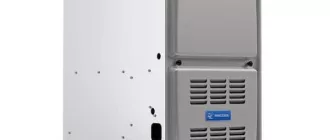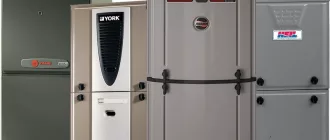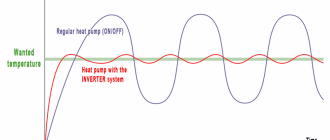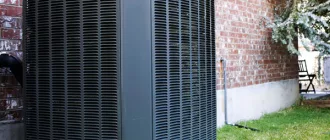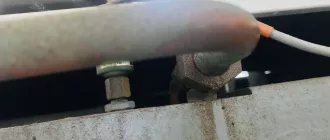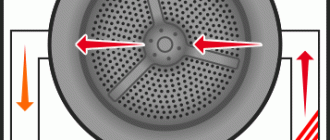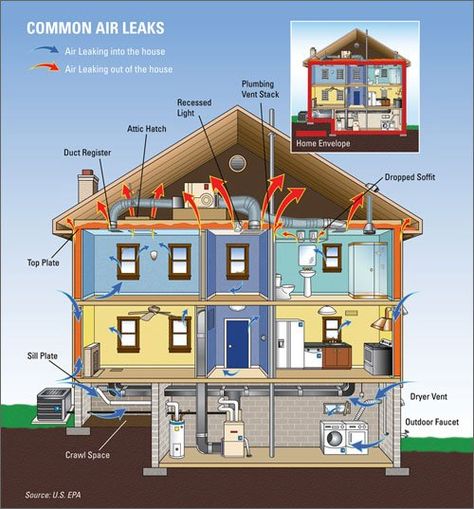
Drafty House? Six Energy Savings Tips for Your Home
Is your house feeling drafty and causing your energy bill to skyrocket? We have the solution for you! Here are six energy-saving tips that will not only improve the comfort of your home but also save you money on your energy bills.
1. Seal the Leaks: Start by locating and sealing any air leaks in your home. These can be found around windows, doors, and electrical outlets. Use weatherstripping, caulk, or foam sealant to block any drafts.
2. Insulate Your Attic: Did you know that a well-insulated attic can significantly reduce your energy consumption? Add insulation to your attic to prevent heat from escaping in the winter and entering in the summer.
3. Install a Programmable Thermostat: Take control of your energy usage by installing a programmable thermostat. Set it to a lower temperature when you’re away or asleep, and enjoy the energy savings.
4. Upgrade to Energy-Efficient Appliances: Old appliances can be energy vampires, sucking up unnecessary electricity. Upgrade to energy-efficient models that are designed to save you money in the long run.
5. Use Natural Light: During the day, open your curtains and blinds to let in natural light. Not only will this reduce your need for artificial lighting, but it can also warm up your home without using any energy.
6. Unplug Electronics When Not in Use: Many electronics continue to draw power even when they’re turned off. Unplug chargers, TVs, and other devices when you’re not using them to avoid wasting energy.
By implementing these six energy-saving tips, you’ll say goodbye to a drafty house and hello to a more comfortable living space and lower energy bills. Start saving energy and money today!
Insulate Your Attic
If your house feels drafty, one of the main culprits may be your attic. Ensuring that your attic is properly insulated is one of the key tips for energy savings in your home.
A poorly insulated attic can allow cool air to escape in the summer and warm air to escape in the winter. This not only leads to discomfort but also higher energy bills as your HVAC system works harder to maintain a consistent temperature.
To insulate your attic, start by sealing any gaps or cracks that may be present. Use weatherstripping or caulk to fill in these areas, paying attention to areas around pipes, vents, and electrical wiring.
Next, consider adding insulation to your attic. There are different types of insulation to choose from, including fiberglass batts, blown-in insulation, and spray foam insulation. Each type has its pros and cons, so it’s important to do your research and consult a professional if needed.
Insulating your attic can make a significant difference in improving the energy efficiency of your home. Not only will it help to reduce drafts and maintain a more comfortable temperature, but it can also save you money on your energy bills.
So, don’t overlook the importance of insulating your attic when it comes to energy savings. Take the necessary steps to properly insulate your attic and say goodbye to that drafty house!
Seal Air Leaks
One of the most effective ways to save energy in your home is by sealing air leaks. Air leaks can make your house feel drafty and can greatly increase your energy bill. By sealing these leaks, you can keep the warm air inside during the winter and the cool air inside during the summer.
Here are six tips to help you seal air leaks in your home:
| 1. | Inspect windows and doors for any gaps or cracks. Use weatherstripping or caulk to seal these areas. |
| 2. | Check for leaks around outlets, switches, and light fixtures. Use foam gaskets or caulk to seal these areas. |
| 3. | Seal gaps between the wall and baseboards with caulk or sealant. |
| 4. | Insulate your attic and crawl spaces to prevent air leaks from the top and bottom of your house. |
| 5. | Install door sweeps on exterior doors to stop drafts from coming in. |
| 6. | Consider using window insulator kits to create an additional barrier against drafts. |
By following these energy-saving tips and sealing air leaks in your home, you can improve the comfort and energy efficiency of your house, while also saving money on your energy bills.
Install Energy Efficient Windows
If you want to maximize your savings and make your home more energy efficient, it’s time to consider installing energy efficient windows. Old, drafty windows can be a significant source of heat loss during the winter and heat gain during the summer.
By replacing your old windows with energy efficient ones, you can reduce drafts, improve insulation, and lower your heating and cooling costs. Energy efficient windows are designed with advanced features such as multiple panes, low-emissivity coatings, and gas fills, which help to prevent heat transfer and minimize air leakage.
Not only will energy efficient windows help you save on your energy bills, but they will also enhance the comfort and value of your home. With improved insulation and reduced drafts, you’ll enjoy a more consistent indoor temperature and a quieter living environment.
When choosing energy efficient windows, look for the ENERGY STAR label. ENERGY STAR certified windows meet strict criteria for energy efficiency and have been independently tested and verified by the National Fenestration Rating Council (NFRC). Additionally, these windows are eligible for energy efficiency tax credits or rebates in many jurisdictions.
Investing in energy efficient windows is a smart choice for homeowners looking to increase their savings, improve their home’s comfort, and reduce their environmental impact. With six energy savings tips for your home, including installing energy efficient windows, you can say goodbye to a drafty house and hello to a more energy efficient and comfortable living space.
Use Programmable Thermostat
Another important step in saving energy and reducing your utility bills is to invest in a programmable thermostat for your home. This device allows you to set different temperatures for different times of the day, ensuring that your home is always at the ideal temperature.
A programmable thermostat helps you to avoid wasteful heating or cooling when no one is at home or during the night when you are sleeping. By automatically adjusting the temperature settings, you can save energy and reduce your carbon footprint.
With a programmable thermostat, you can easily program your desired temperature for specific times, such as during the morning when everyone is preparing for the day or during the evening when everyone is relaxing at home. This feature ensures that your home is comfortable when you need it and energy-efficient when you don’t.
Additionally, a programmable thermostat can be controlled remotely through your smartphone or computer, allowing you to make adjustments even when you’re away from home. This functionality provides convenience and flexibility, ensuring that you can always optimize your energy usage.
Investing in a programmable thermostat is a wise choice for any homeowner looking to save energy and reduce their utility bills. With its ability to automatically adjust temperature settings and its remote control capabilities, this device is a valuable addition to any energy-saving efforts.
So, say goodbye to a drafty house and hello to energy savings by using a programmable thermostat in your home!
Upgrade to Energy Star Appliances
As part of our six energy savings tips for your home, upgrading to Energy Star appliances is an excellent way to reduce your energy consumption and save on your monthly bills.
Energy Star appliances are specially designed to be more energy-efficient than standard models. They use less electricity or natural gas, which not only helps the environment but also helps your wallet.
When you upgrade to Energy Star appliances, you can enjoy significant energy savings. Whether it’s a new refrigerator, dishwasher, washing machine, or air conditioner, these appliances are designed to maximize efficiency and minimize waste.
By investing in Energy Star appliances, you can expect to see a noticeable decrease in your energy usage, resulting in lower utility bills. Additionally, Energy Star appliances often come with additional features that make them even more appealing, such as quieter operation and longer lifespans.
So why wait? Upgrade to Energy Star appliances today and start enjoying the benefits of an energy-efficient home. Say goodbye to high energy bills and hello to a more sustainable future.
Switch to LED Lighting
One of the most effective ways to save energy and reduce your electric bill is by switching to LED lighting. LED bulbs use up to 80% less energy than traditional incandescent bulbs and last much longer, making them a smart choice for every drafty home.
Not only do LED bulbs save energy, but they also produce less heat, helping to keep your house cooler in the summer months. This can lead to additional energy savings by reducing the need for air conditioning. LED bulbs are also more durable and resistant to breakage, making them an ideal choice for a busy household.
By replacing your old incandescent bulbs with energy-efficient LED bulbs, you can make a significant impact on your energy usage and savings. Additionally, LED bulbs are available in a variety of styles and colors, allowing you to create the perfect atmosphere in every room of your house.
Take the first step towards a more energy-efficient home by switching to LED lighting. Not only will you save money on your energy bills, but you will also help reduce your carbon footprint and contribute to a greener environment.
- Choose LED bulbs for all your lighting needs
- Look for Energy Star certified LED bulbs for maximum energy savings
- Consider installing dimmer switches to further customize your lighting
- Replace outdoor bulbs with LED options to increase energy efficiency
- Donate your old incandescent bulbs to a local recycling center
Make the switch to LED lighting and say goodbye to high energy bills and a drafty home. Start saving energy and money today!
Maintain HVAC System Regularly
Regular maintenance of your HVAC (heating, ventilation, and air conditioning) system is essential for keeping your house comfortable and energy efficient. Here are six tips to help you maintain your HVAC system:
1. Change Air Filters: Replace your air filters regularly to ensure proper airflow and prevent dust and debris buildup, which can reduce energy efficiency.
2. Clean Ductwork: Schedule professional duct cleaning every few years to remove accumulated dirt, dust, and allergens, which can obstruct airflow and decrease system performance.
3. Inspect Thermostat: Check your thermostat regularly to make sure it’s functioning correctly and set at the appropriate temperature for optimal energy savings.
4. Schedule Tune-Ups: Arrange annual HVAC system inspections and tune-ups performed by a qualified technician to identify and address any potential issues before they become major problems.
5. Seal Air Leaks: Identify and seal any air leaks in your home’s ductwork, windows, doors, and walls to prevent conditioned air from escaping and outside air from entering, reducing energy waste.
6. Consider an Energy Audit: Hire a professional to perform an energy audit of your home, identifying areas where energy efficiency can be improved, including your HVAC system.
By following these maintenance tips, you can ensure your HVAC system operates efficiently, saving you money on energy bills and maintaining a comfortable home environment.
Optimize Natural Lighting
When it comes to maximizing energy savings in your home, don’t overlook the power of natural lighting. By making a few simple adjustments, you can transform your dim and gloomy space into a bright and inviting oasis.
Here are six tips to help you optimize natural lighting:
1. Clean your windows: Over time, dust and grime can accumulate on your windows, blocking out natural light. Regularly clean your windows inside and out to allow as much light as possible to enter your home.
2. Use light-colored curtains or blinds: Dark curtains or blinds absorb light and prevent it from filling your rooms. Opt for light-colored window treatments to allow more natural light to filter through.
3. Trim outdoor foliage: If you have trees or bushes blocking your windows, consider trimming them back. By removing any obstruction, you can significantly increase the amount of sunlight that enters your home.
4. Utilize reflective surfaces: Placing mirrors or other reflective surfaces strategically throughout your home can help bounce natural light around and brighten up darker corners.
5. Keep your windows clear: Avoid cluttering your windowsills with decorations or plants. By keeping your windows clear, you allow more sunlight to penetrate your living spaces.
6. Install skylights or light tubes: If your home lacks sufficient natural light, consider installing skylights or light tubes. These fixtures can bring in additional sunlight and brighten up any room.
By optimizing natural lighting in your home, you can reduce your reliance on artificial lighting during the day, resulting in significant energy savings. So say goodbye to a dark and dreary home and embrace the beauty of natural light!
Use Window Coverings
One of the easiest and most cost-effective ways to save energy in your home is by using window coverings. By properly covering your windows, you can prevent heat loss during the winter months and keep your home cooler in the summer.
Here are six tips for using window coverings to maximize energy savings in your house:
|
1. Install Insulated Curtains |
Insulated curtains are designed to provide an extra layer of insulation for your windows. They help trap heat inside your home during the winter and block out the sun’s heat during the summer, keeping your home comfortable and energy efficient year-round. |
|
2. Use Cellular Shades |
Cellular shades are another great option for energy savings. These shades have a unique honeycomb design that helps to trap air and create an insulating barrier between your windows and the inside of your home. This helps to regulate temperature and reduce the need for heating or cooling. |
|
3. Try Roman Shades |
Roman shades, also known as fabric window shades, can add a touch of elegance to any room while also providing energy savings. When closed, these shades can help to block out both sunlight and drafts, making your home more comfortable and efficient. |
|
4. Consider Window Film |
Window film is a thin, reflective material that can be applied directly to your windows. It helps to reduce heat gain in the summer and heat loss in the winter, making your home more energy efficient without obstructing your view. |
|
5. Don’t Forget about Blinds |
Blinds are a versatile option for window coverings. When closed, they can provide privacy and block out sunlight. They can also help to insulate your windows and reduce heat transfer, helping you save on heating and cooling costs. |
|
6. Use Window Shadings |
Window shadings, like sheer shades or silhouette shades, are another effective way to save energy in your home. These shades offer a combination of light control, privacy, and energy efficiency. They can help block UV rays, reduce glare, and insulate your windows, all while adding a touch of beauty to your space. |
By following these tips and using window coverings effectively, you can significantly reduce your energy consumption and enjoy a more comfortable and energy-efficient home.
Install Solar Panels
Another great way to save on energy costs is to install solar panels on your home. Solar panels harness the power of the sun to generate electricity, reducing your reliance on traditional energy sources. By installing solar panels, you can significantly reduce your carbon footprint and lower your monthly energy bills.
Solar panels are a long-term investment that can provide you with clean energy for many years to come. They are designed to withstand various weather conditions and can even generate electricity on cloudy days. By utilizing solar power, you can take advantage of the abundant energy source that the sun provides and contribute to a sustainable future.
- Save money: By installing solar panels, you can generate your own electricity and reduce your reliance on the grid. This can lead to significant savings on your energy bills over time.
- Reduce carbon emissions: Solar energy is a clean and renewable source of power. By utilizing solar panels, you can reduce your carbon footprint and contribute to the fight against climate change.
- Increased home value: Installing solar panels can increase the value of your home. Many homebuyers are now looking for homes with solar panels as they recognize the long-term cost savings and environmental benefits.
- Energy independence: By generating your own electricity, you can become less dependent on traditional energy sources. This can provide you with greater energy security and peace of mind.
- Government incentives: In many places, there are government incentives available for installing solar panels. These can range from tax credits to grants, making solar panel installation even more affordable.
- Environmental benefits: Solar energy is a renewable and clean source of power. By installing solar panels, you can help reduce air and water pollution, as well as reliance on fossil fuels.
By installing solar panels on your home, you can take control of your energy usage, reduce your environmental impact, and save money in the long run. Say goodbye to drafty house and embrace a more sustainable future with solar power!
Utilize Smart Power Strips
If you’re looking to make your home more energy efficient and save money on your electricity bills, one of the easiest ways to do so is by utilizing smart power strips. These innovative devices help to reduce energy consumption by automatically cutting off power to electronic devices that are not in use.
Smart power strips work by detecting when a device is in standby mode or not being actively used. They then cut off power to that device, preventing it from drawing unnecessary energy. This feature is particularly useful for appliances and electronics that tend to consume standby power even when they are turned off.
By using smart power strips, you can eliminate wasted energy and reduce your overall electricity consumption. This not only helps the environment by reducing greenhouse gas emissions, but also leads to significant savings on your energy bills each month.
In addition to their energy-saving benefits, smart power strips also offer convenient features. Some models come with timers or motion sensors, allowing you to schedule when devices should shut off or automatically turn on when you enter a room. This can help further optimize your energy usage and ensure that devices are only powered when needed.
So, if you’re tired of wasting energy and money on standby power, consider utilizing smart power strips in your home. These small, affordable devices can make a big difference in your energy savings and help create a more efficient and sustainable living environment.
Adjust Water Heater Temperature
When it comes to energy savings in your home, adjusting your water heater temperature can make a big difference. Lowering the temperature on your water heater can help you save money on your energy bills while still providing enough hot water for your household needs.
Here are six tips to help you adjust your water heater temperature:
- Locate your water heater. It is usually found in the basement or utility closet.
- Turn off the power to the water heater. This can be done by flipping the switch on the circuit breaker or turning off the gas valve.
- Remove the access panel or insulation to access the temperature control dial.
- Use a thermometer to measure the current temperature of the water.
- Adjust the temperature dial to your desired setting. For energy savings, lowering the temperature to 120 degrees Fahrenheit (48 degrees Celsius) is recommended.
- Replace the access panel or insulation and turn the power back on to the water heater.
By adjusting your water heater temperature, you can prevent energy waste and reduce your monthly utility bills. So, take control of your energy usage and start saving money on your energy bills today!
Use Ceiling Fans Efficiently
When it comes to energy savings tips for your home, using your ceiling fans efficiently is key. Ceiling fans are a great way to circulate air and keep your house cool in the summer and warm in the winter.
To maximize energy savings, make sure your ceiling fan is set to rotate counterclockwise in the summer. This creates a wind-chill effect and helps keep the room cooler without having to rely on your air conditioner. In the winter, set your ceiling fan to rotate clockwise at a low speed. This will help distribute warm air throughout the room, allowing you to lower your thermostat and save on heating costs.
Additionally, consider using ceiling fans in combination with other energy-saving techniques. For example, if you have a fireplace, using a ceiling fan can help distribute the warm air generated by the fire throughout the room, making your home more comfortable and reducing the need for additional heating.
Remember to turn off the ceiling fans when you leave the room to save even more energy. Leaving them on when no one is around is a waste of electricity and won’t provide any additional benefits.
| Tip 1: | Seal air leaks in your home. |
| Tip 2: | Insulate your attic. |
| Tip 3: | Upgrade to energy-efficient windows. |
| Tip 4: | Install a programmable thermostat. |
| Tip 5: | Use energy-saving light bulbs. |
| Tip 6: | Use ceiling fans efficiently. |
Plant Shade Trees
Planting shade trees around your home is a smart and effective way to conserve energy and lower your cooling costs. Trees provide natural shade, reducing the amount of direct sunlight that enters your house. By creating a barrier between the sun and your home, shade trees help keep your interior cool, reducing the need for excessive air conditioning.
Here are six tips for planting shade trees to maximize your energy savings:
| 1. Location: | Consider the location of your home and the natural pattern of the sun. Plant trees on the southern and western sides of your house to block the hottest rays of the day. |
| 2. Size: | Choose trees with a mature height and spread that will provide ample shade for your home. Consider the size and shape of your property, as well as any existing structures that may impact tree growth. |
| 3. Leaf Density: | Select trees with dense foliage to maximize shade coverage. Trees with large, broad leaves tend to provide better shade compared to those with small, thin leaves. |
| 4. Water Requirements: | Research the water requirements of different tree species to ensure they are suitable for your climate and environment. Deep-rooted trees that can withstand periods of drought are ideal for energy savings. |
| 5. Maintenance: | Proper tree maintenance is essential for maximizing shade and energy savings. Prune trees regularly to maintain their shape and remove any dead or damaged branches. Mulch around the base of the trees to retain moisture and discourage weed growth. |
| 6. Protection: | Protect your young shade trees from pests, diseases, and extreme weather conditions. Install tree guards or provide support to help them grow strong and healthy. |
By planting shade trees strategically, you can significantly reduce your home’s energy consumption and create a more comfortable living environment. Enjoy the benefits of energy savings while contributing to a greener and more sustainable future!
Opt for Energy Audit
If you want to maximize your energy savings and say goodbye to a drafty house, opting for an energy audit is a wise decision. An energy audit involves a thorough assessment of your home’s energy efficiency. It helps identify areas where energy is wasted and provides recommendations on how to improve your home’s energy performance.
During an energy audit, a certified professional will inspect your house and perform various tests to determine the energy efficiency of different components, such as insulation, windows, doors, and HVAC systems. They will assess air leaks, insulation levels, and the overall energy consumption of your home.
Based on the findings of the energy audit, you will receive a detailed report outlining specific energy-saving measures that can be implemented in your home. These measures may include upgrading insulation, sealing air leaks, installing energy-efficient windows and doors, or improving your heating and cooling systems.
By opting for an energy audit, you can gain valuable insights into the energy performance of your home. This knowledge will empower you to make informed decisions about energy-saving upgrades and improve the overall comfort and efficiency of your living space.
| Benefits of an Energy Audit: |
| 1. Identify and fix energy-wasting areas in your house. |
| 2. Receive specific recommendations tailored to your home’s needs. |
| 3. Reduce energy consumption and lower utility bills. |
| 4. Enhance the comfort and livability of your home. |
| 5. Increase the value and marketability of your property. |
| 6. Contribute to a greener environment by reducing your carbon footprint. |
Don’t wait any longer. Take control of your energy consumption and make your home more energy-efficient by opting for an energy audit today!
Q&A:
Why do I need to save energy in my home?
Saving energy in your home not only helps reduce your carbon footprint and combat climate change, but it also helps you save money on your energy bills. Plus, using less energy means less reliance on fossil fuels and a cleaner, healthier environment for everyone.
What are some common signs of a drafty house?
Common signs of a drafty house include feeling a noticeable breeze near windows and doors, seeing curtains or blinds move when they shouldn’t, and finding it hard to keep a consistent temperature in different rooms. You may also notice higher energy bills as your heating or cooling system works harder to compensate for the drafts.
How can I detect and seal air leaks in my home?
To detect air leaks in your home, you can use a lit candle or an incense stick and carefully move it along windows, doors, and other areas where leaks are common. If the flame flickers or the smoke is drawn away, it’s a sign of a draft. To seal air leaks, you can use weatherstripping, caulk, or spray foam insulation to fill gaps and cracks.

